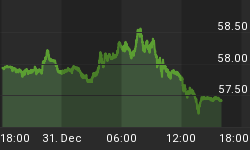We're coming up on the end of the year 2004 lateral correction and also the end of what Stock Trader's Almanac calls the "worst six months" of the year. The months ahead are likely to be quite bullish for equities, especially the tech-laden sectors, and there's a good chance for recovery highs for the year in the broad market indices. If this happens it will spell the end for the stubborn "super bears" who have growled for months without end about how the stock market is going to crash any day now and with it the U.S. and global economy.
One of the big reasons why the coming months should be bullish for the market is the key money supply statistics. We knew the micro-mini recession was coming this summer based on the huge decline in the money supply rate of change last year. Since this typically takes several months to hit the market, you can always tell when a slowdown is coming. Conversely, whenever a big rate of change increase in money supply takes place it's only a matter of time before the stock market responds to positive fashion. This huge spike in money supply occurred earlier this year and its impact is about to be felt.
Yet despite the positive monetary, cyclical, and technical underpinnings, bearish rumblings and concerns about the economy (domestic and global) continue to be heard in the financial press. In recent weeks we've even witnessed a rash of newsletter writers forecasting a stock market crash this fall (which has yet to happen). This type of worry is typical of major market bottoms and always happens during the 10-year cycle bottom of the fourth year of the decade (see 1994, 1984, 1974, et al).
In just about every survey I've come across in recent weeks, everyone seems to have misgivings about the state of the economy. Some respected analysts have even forecast a recession for 2005, claiming that the year following a presidential election typically sees a decline in economic and stock market performance. (Actually, this isn't even close to being true as there have been several notable exceptions to this "rule" in the past few decades). As we've previously discussed, the fifth year of the decade has *always* been bullish for the stock market with not one single exception in the past 120 years.
A growing number of analysts and observers have commented on the poor performance of the Dow 30 index relative to the S&P 500 and NASDAQ Composite indexes (not to mention various other small-cap and mid-cap indexes). Veteran newsletter writer Joe Granville questions whether the Dow could be the "hook" being used to trick investors into going bearish (although he concludes that it is the S&P and NASDAQ that are the hooks).
I agree with Granville that there is definitely an attempt at misleading investors by way of a market index, but I disagree with his conclusion. Clearly, it is the Dow that is being used as the "hook" right now as that index recently made a new low for the year on a closing basis. As previously discussed, I will no longer give as much weight to the Dow 30 index in the future as I feel its time has passed as being adequately representative of the broad market. We're truly in a "new economy" and a new economy requires a better representation of the various components of that economy. This is more than adequately reflected in the S&P 500, which for all intents and purposes is "the market."

And what message is the chart of the S&P sending us? Take a look and you'll see a clear-cut inverse "head-and-shoulders" pattern in this index, which forecasts an upside breakout and sustained upside move. We are on the very cusp of this breakout!
Moreover, the S&P chart shows an extremely impressive rising trend in earnings-per-share which the market has *yet* to respond to in positive fashion. It's only a matter of time, for a sustained rising trend in earnings cannot help but be followed by a rising trend in stock prices as sooner or later the "bottom feeders" of Wall Street look for beaten-down stocks with good earnings. Wall Street sooner or later always rewards a rising earnings trend by pouring money into those companies which have underpriced stocks and good earnings trends.
In this "new economy" those companies that are relative small, flexible, fast to react to changes in the market, with a good earnings outlook within growth sectors will be the most amply rewarded. This is one reason why I believe the tech-related and small-cap stock sectors will lead the market to higher levels in coming years.
Months ago I predicted the NASDAQ would most likely lead the broad market higher into 2005 and many bears scoffed at such a notion. But the heyday of the blue chip stocks is over. The old economy stocks probably aren't going to perform as well as they did in previous years, especially since the dominant long-term cycle behind the rise of the industrials has peaked. The years immediately ahead will be led by the smaller, leaner companies which have faster response times to the vicissitudes of the marketplace.
















